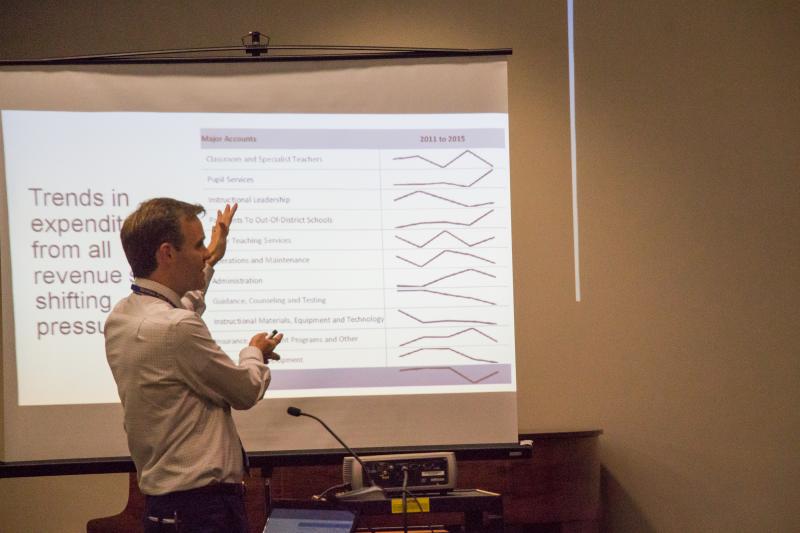Wareham School Committee learns financial health of the district
Despite what School Committee member Cliff Sylvia termed as “Draconian cuts" to Wareham Public Schools’ budgets, school costs exceeded state requirements last year.
According to a concise report Finance Manager Michael MacMillan presented to the School Committee Wednesday night, Wareham Public Schools spent six percent more than the projected state requirement in fiscal year 2015. Of greatest concern was the in-kind spending, or funding from the town, that reached more than $8.2 million, roughly $1.5 million more than five years ago.
The piece of the report that raised the most eyebrows was district expenditure on staff health care. As Committee Chairman Geoff Swett noted, “Ninety-six percent of spending [increase] is on benefits.”
“I would have been happy to see something halfway, but I don’t, and it hasn’t gone back down,” Swett said of the spending increase between 2011 and 2014. “This is driven by the cost of being self-insured.”
In a self-insured system, an employer is paying all health care costs, not just employees' premiums.
Swett also hammered home that the increase in spending is not actually reflected in programs for Wareham’s students, and that it actually reflects greater spending on compulsory, non-discretionary programs.
“Anybody who thinks 6 percent is great is missing the point, because we aren’t spending it on the kids!” Swett said.
But this number, Committee Secretary Rhonda Veugen hastened to say, is not under the district’s control.
“We are the largest provider of employee base in town, but we had no control over the plan that was chosen and managed for … as long as I have been on the School Committee,” Veugen said. “We haven’t been at the table when it came to … costs and savings … that contribute to the bare minimum of what the town needs to contribute to the school system.”
Though he was displeased with the higher-than-expected spending, Swett said Wareham actually spends less than most other school districts, which he said tend to go over that number by almost 20 percent. The projected expenditure, MacMillan said, is based on a formula that takes into account 11 different variables, including the number of students the district has, its low-income students, and its special education students.
“We’ve got to understand that the required net school spending is not actually a true reflection of what we spend,” MacMillan said. “We really underestimate the cost of health insurance and special education students. This is … across the state.”
MacMillan also broke down the district’s seven largest sources of income. Of the seven, the only notable change was in what is known as the circuit breaker, which increased. The circuit breaker is the state’s special education reimbursement program, which provides additional state funding to districts for high-cost special education students.
“We would rather our circuit breaker be low because it would mean our costs are low,” MacMillan said.
The committee also heard seven resolutions to be considered at Town Meeting in the fall, and approved the cafeteria managers’ contract, and approved a cross country pilot club for the high school.













